What it means to be a diverse educator
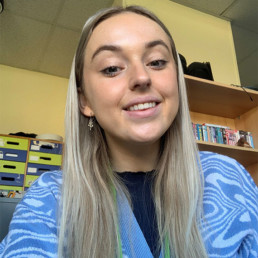
Written by Chloe Roberts
Chloe is an English trainee from Hampshire. She is currently completing her training with BASCITT.
Teaching for diversity refers to acknowledging and celebrating a range of differences in and out of the classroom. Being an inclusive practitioner who embraces difference allows transformations in the way we think, teach, learn and act. This is vital in ensuring all students feel celebrated in their learning environment. Although we have come a long way in recognising and celebrating diversity, we still have a long way to go. It is not a case of acknowledging that you are already ‘inclusive’, it is about educating yourself on key aspects of your students’ lives and the dynamics of society. This is something that I will continue in my practice as I embark on my journey to becoming an English teacher. I am quite fortunate that in my subject I can use a variety of resources within the classroom that celebrate a vast amount of different people and cultures, however, this is more limited in KS4 due to the GCSE specifications. Understandably there are more limits in other subjects but having more of an awareness of what you could do is vital. So going forward, what can you do to increase your own knowledge and understanding on diversity?
DiverseEd:
This site is a hub of resources and knowledge on diversity and inclusion. Hannah Wilson has created a space where a variety of practitioners can come together and share thoughts and research. In addition, events and seminars are organised regularly to support teachers and equip them with a breadth of knowledge.
I attended an online conference with Diverse Ed and the range of topics discussed were extremely informative. Hearing from a diverse number of practitioners gave me lots to think about in terms of my own practice. Inspiring teachers to be activists and encouraging a diverse number of people into the profession is a way to make waves in the education community. Jo Brassington, who discussed their own experience in the classroom as a non-binary teacher, claims that ‘to make change we need to be seen in the room’. I absolutely agree with this, as a member of the LGBTQ+ community I have always struggled with being open about my identity with others. Discussions like these have encouraged me to ‘be seen in the room’ and embrace my own differences, which some of my students can relate to. I am no way implying you must ‘come out’ to students if you do not feel comfortable, but having some transparency about your own lived experience can create a safe space for others to.
The whole morning was incredibly thought provoking and gave me a lot to think about in my own practice. Fortunately, there are recordings of the conference on Diverse Ed alongside lots of blog posts which can inform your teaching. (see below in further resources for website).
Seminars:
Over the past year I have attended a variety of seminars relating to diversity in education. All of which I have found on Eventbrite. I find this website incredibly useful for a range of different forms of CPD. It is accessible and the majority of seminars are free to access. This is another way to increase your knowledge on a variety of different topics, including diversity within education.
A recent seminar I attended was on ‘Recovering Black Storytelling in Qualitative Research’. This covered how we can encourage our students to use their narrative voice alongside a discussion on Stephanie Toliver’s new book, which is being released. She discussed the literary devices she used in her novel and the origins behind them, which was really interesting. The thought process behind a writer’s writing is always incredibly fascinating! This was a celebration of black culture along with discussions that can translate into the classroom. Although curriculums are becoming more diverse, I have found there is still a lack of celebration when it comes to people of colour; the negative connotations that are presented in literature through the texts we have historically studied are not changing. Why are we continuing to study outdated ideologies? I am not discrediting the fact that it is important to have an understanding of such things, but to prioritise information presented by white cisgendered men, does limit our understanding and knowledge of other cultures.
Overall, seminars are brilliant and can really inform your practice. Eventbrite has such a range from something subject specific or general CPD for teachers. I recommended having a look around the site and searching for seminars that spark your interest.
What can you do in school?
I think a good place to start is speaking to colleagues and gauge an understanding of what your school already does. In my previous school, I knew that there used to be an LGBTQ+ and ally group during lunch times. I then decided to reinvent the club and bring it back. I wanted to create a space where anyone could come and discuss their experiences and learn about the LGBTQ+ community. I was really pleased with the turnout and the maturity all students displayed when discussing their experiences. It was great to hear their ideas and what the school could do to ensure they were being more inclusive.
Speak to your departments and see what you can bring into the curriculum. Again, as an English teacher I am fortunate to be able to bring in a range of different texts that students can learn from; however, tutor time is an excellent way to go into more detail and have discussions with students regarding diversity and what it means to them. Obviously PSHE is an excellent way to integrate these topics but get to know what your students are learning in PSHE and relate that into lessons. In addition, during LGBTQ+ History month and Black History month, there are a range of one off lessons that you can use in school which celebrate and educate those on diversity. Please don’t limit yourself to using these resources during their celebratory months, there are so many amazing things we can learn from a variety of lived experiences.
Here below are a range of resources that I have found really useful in my learning journey:
Books:
- How to transform your school into an LGBT+ friendly place by Anna Carlile and Elly Barnes
- Celebrating difference: A whole school approach to LGBT+ inclusion by Shaun Dellenty
- From Ace to Ze: The little book of LGBT terms by Harriet Dyer
- The Emperor Has No Clothes: Teaching about Race and Racism to People Who Don’t Want to Know By Tema Jon Okun
- So You Want to Talk about Race By Ijeoma Oluo
- White Fragility By Robin D’Angelou
- Why I’m No Longer Talking to White People about Race By Renni Eddo-Lodge
- Memoirs of a Black Englishman By Paul Stephenson
- White Privilege By Kalwant Bhopal
- Not Light but Fire: How to Lead Meaningful Race Conversations in the Classroom by Matthew R. Kay
- Facilitating Conversations about Race in the Classroom by Danielle Stewart, Martha Caldwwell, and Dietra Hawkins (comes out in March)
- Knowing How To Discuss Race In The Classroom: A Guide For White Teachers On How To Develop and Understand Racial Literacy by Ashlee A. Jeannot
- A Little Guide for Teachers: Diversity in Schools by Bennie Kara
Websites:
- Stonewall: LGBTQ-inclusive education: everything you need to know (stonewall.org.uk)
- Youth.gov: Schools | Youth.gov
- Breakout Youth Basingstoke: About Breakout Youth: LGBTQ+ Hampshire-based Charity
- Diverse Ed: https://www.diverseeducators.co.uk/
- Black Men Teach: https://blackmenteachtc.org/
- Preparing for Cultural Diversity: Resources for Teachers: https://www.edutopia.org/blog/preparing-cultural-diversity-resources-teachers
- Resources for Educators: https://equaliteach.co.uk/education/classroom-resources/
People to follow on Twitter:
Here are some of the things I have thought about when increasing my knowledge on diversity. It is a journey and it is important to ask yourself difficult questions and reflect on what you can do within the classroom. As teachers we can all be activists and create an environment where all of our students feel heard and validated.
The Power of the Community
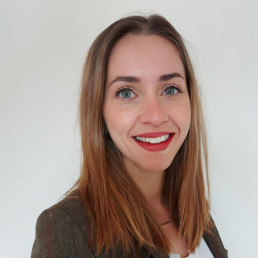
Written by Dena Eden
English teacher and writer based in Norfolk. MA in Educational Research and currently working as an English Standards Leader.
I signed up to the recent #DiverseEd conference knowing I would hear about some brilliant examples of Diversity, Equity and Inclusion work going on across education; I didn’t expect to finish the conference feeling empowered. Listening to authentic voices and lived experiences encouraged me to reflect on my own, and has given me the confidence I needed to forge ahead with necessary change.
As a cis white person I recognise my privilege. As a woman, I have experienced the frustration of my ideas not being taken seriously until a man repeats them. My choice on how to present physically also means people have undermined my intelligence and assume I enjoy shopping and ‘partying’ – they were someone’s actual words. They are surprised when I share my achievements and professional life before teaching. They are even more surprised when they find out I’m gay. Ironically, the part of my identity which is a ‘protected characteristic’ has been met with more positive outcomes than negative. When people ‘find out’ I am gay, women treat me more warmly and men take me more seriously. But that’s a whole other blog post.
I want to share my own experience to try and explain the effect the #DiverseEd conference had on me: despite being invested in creating a truly inclusive environment for a long time, I didn’t feel ‘diverse’ enough to be the person to do that – but at the same time also felt a huge pressure from being part of the LGBTQ+ community to be a voice for those who don’t speak up. Growing up in Birmingham and then living and working in both Mexico and the USA means that I have experience of living life in the role of the ‘other’ – but also that I have always worked in environments rich in diversity. Embarking upon a career in education in a significantly less diverse area of the UK was a shock to me.
Despite absolutely loving where I live and work for lots of reasons, it does continue to surprise me when I witness the problematic attitudes and language used when talking about diversity and inclusion. Discriminatory language is used without understanding why it is a problem and the pervasive idea that ‘real’ prejudice is overt and/or violent means many people do not recognise their privilege: Prejudice hides behind ignorance; tokenism acts as acceptance; tolerance is sufficient.
Understanding inaction: providing solutions not problems.
My experiences have frustrated me and as a result, I approached leadership in the Trust I currently work for to start a conversation; it was met with enthusiasm and support and has led to me setting up an Inclusive Communities group working with outstanding colleagues invested in making long lasting change.
Up until the #DiverseEd conference, I had some idea of what I wanted us to do – but have been apprehensive. For me, a truly inclusive environment has always been about addressing the root of the issue – people’s mindsets. Until people are willing to admit both their own privilege and the importance of the work that needs to be done, nothing will change.
Watching the conference helped me to reflect on previous conversations and helped me to understand that I had been too concerned with losing respect or upsetting others by voicing how crucial the work around diversity, equity and inclusion really is. But without action, we are conversationalists not activists; my thinking has now shifted from worrying about reactions to focusing on my own actions.
Before the conference, I felt like the battle was in trying to get people to appreciate the importance and immediacy of the work that needs to be done – it isn’t work with immediate measurable outcomes for example. After watching the conference, I feel validated in arguing that there should be no such battle. The immediacy and importance of this work is not an opinion – it is a fact.
So moving forward, rather than focusing on whether the changes can be made, I am focusing on how they will be made. Working with an incredible community and calling on the expertise of my colleagues, we are going to approach people with solutions rather than problems. This is where we are going to start:
- Looking at policy within schools and across the whole Trust.
- Educating our staff to be able to challenge one another and our young people – this will be led by training from authentic voices sharing their lived experiences.
- Recognising multiple stakeholders in this work: parents, governors and HR should be included in our approach to EDI.
- Working with our incredible curriculum team to explore ways we can include balanced and meaningful representation into our existing work.
It was overwhelming to think about the work that needed to be done; now I’m excited to get started. We deserve genuine support, not allowances; to be comfortable as well as safe; celebration, not tolerance.
“You never get a second chance to make a first impression.”
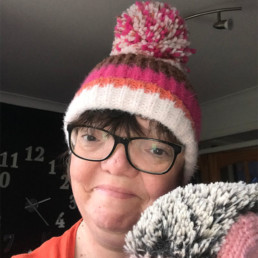
Written by Corinna Richards
An avid crocheter, who also happens to teach, train and lead.
“You never get a second chance to make a first impression.”
— Andrew Grant.
Whether Oscar Wilde or Will Rogers said it first, isn’t for this purpose particularly important. What any student or teacher with a facial disfigurement will tell you, is that it’s true. And the experience of that is hugely important. It’s always been true, but in our “beauty bias” society, looking different – whatever that difference may be, is a big deal. Having a facial or ‘visible difference’ can be excruciating. Our physical appearance matters in first impressions. I’m not saying it should, but from my experience it does.
I blog about this from two perspectives. Firstly, as a person with a congenital facial disfigurement who works in Education and secondly as an EdD student. I’ve just turned 50, and “back in the day” plastic surgery wasn’t as developed as it is now. I had my first plastic, corrective surgery at the age of 11, so I spent my primary school years looking very different. My skull fused together in the womb prematurely which caused my eyes to be extremely wide set and for my nose to be virtually flat with two small nostrils. You can imagine…
However, like everyone, I’ve adapted, over-compensated and fought my way back. I always wanted to teach and that’s what I’ve always done. Apart from three terms in suburbia I’ve always taught in inner city London and only once did I have any issues regarding my face from a pupil. I loved and still do, the diversity of the inner-city, the children were remarkably accepting of my appearance, we were all shapes and sizes together, the issue of ‘normal’ just never seemed too prevalent. The same couldn’t be said for the parents! The suspicion of my appearance was always there, in some heated exchanges a name regarding my appearance would slip out (yawn… I’ve never heard that one before…) and I’ve even had some parents ask my secretary what is wrong with my face! (One of the many reasons I prefer children to adults!)
But last year, I had a bit of a shock.
I am in the third of year of EdD at UEL and I am studying the lived experience of Imposter Phenomenon in Teacher Educators. It’s really interesting, but it wasn’t my first choice. Initially, I wanted to study IP in teachers with visible differences. I couldn’t find any. I didn’t know any. I didn’t know any teachers with facial burns, or severe acne, or disfiguring birthmarks or craniosynostosis… statistically they must exist (I am for one)… but where are they? I then thought about all the pupils I have taught over nearly 30 years… lots of differences, but when did I teach a child who was like me? I don’t think I have. Where are these children and where are the teachers?
Recently, in an updated version of Malory Towers, a young actor, Beth Bradfield, with a visible difference joined the cast, but how often do we see actors with facial burns or scars? Possibly in James Bond, but then of course, only as the villain. I attended my first DEI event last weekend, it was brilliant. Representation matters. Yes, it does. So how do I help other people like me have the courage to stand in front of groups of people and teach. I spent decades of my life trying to hide my face. I was desperate to make my visible difference invisible. It seems like I might not be the only one.
For more information visit:
‘Changing Faces’:
The Katie Piper Foundation: www.katiepiperfoundation.org.uk
Headlines:
Geography: Righting the world?
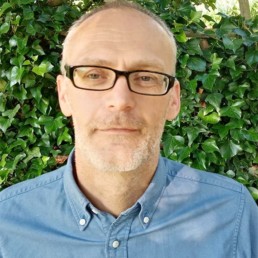
Written by Steve Brace
Head of Education and Outdoor Learning at the Royal Geographical Society. He started his career as a geography teacher and had previously led the education programmes for ActionAid and the Commonwealth Institute.
Studying geography enables young people to better understand the world’s people, places and environments, the interactions between them – from the local to the global scale.
As Ofsted notes, this requires teachers to critically reflect on the imagery, data and attitudes they portray to pupils, so that geography can accurately represents the nature of the world’s people, communities, economies, diversities and experiences (Ofsted 2021). And, as our world continues to change so must geography. This makes the subject such a fascinating and challenging one to teach and why geography has an important role in supporting equality, diversity and inclusion (EDI).
Geography has one of the best gender balances of all subjects and over the last 10 years its GCSE cohort has become much more diverse. Since 2010 its GCSE entries have increased by over 50% reaching a record high of 282,000 candidates last summer. It is welcome that this growth has come predominantly from those groups who were previously less likely to study geography: Black, Asia and minority ethnic pupils; pupils with lower prior attainment; those from low-income backgrounds; and/or pupils studying in comprehensive schools (RGS 2020)
However, the positive change at GCSE is not yet being seen at A Level and the narrowing of intake continues further at university. This is despite the positive outcomes that geography provides for its graduates, who experience above average rates of graduate employment and ‘top 10’ graduate salaries.
It is recognised by the colleagues across the subject community that more work is needed to better support EDI in relation to the curriculum, resources, the teaching workforce and how the subject can support young peoples’ career aspirations. Examples of current activities include:
- Puttick and Murrey’s research (2020) which identified that the ‘piecemeal approach to geographies of race and racism is insufficient for educating students for the 21stC’
- The scholarship shared through the RGS’s Decolonising geographical knowledges conference
- The Higher Education community’s support for accessible and inclusive fieldwork and pride in the field
- The advocacy and work of Black Geographers
- And teacher led initiatives such as Decolonising Geography , Inspirational Geographers and – alongside many others – that of Shiv Das, Hina Robinson and Hafsa Bobat
There are also opportunities to reduce the gap between geographical research and the classroom, such as through the RGS’s Ask the Geographer podcast which share the work of research geographer with teacher and their pupils. Schemes-of-work can also be updated through the incorporation of new research findings, such as the resources based on the Migrants on the Margins research programme which investigated the lives of migrants in Colombo, Dhaka, Harare and Hargeisa. Such resources are further complemented by the wider contributions of many others including Worldmapper, Gapminder and Dollar Street.
Consideration needs also to be given to not only to what is being taught, but also who is teaching geography. This situation is explored in I didn’t have any teachers that looked like me which shares the perspectives of Black, Asian and minority ethnic trainee and early career geography teachers. And they recommend the need for EDI to be held as a responsibility for all geography teachers, as well as the wider subject community and its institutions.
Geographers can also critically reflect on the subject’s development through Britain’s period of Empire and imperialism, how the subject helped create and share stereotypical views about the world and the continuing legacy of these. For example, the very first volume of the Proceedings of the Royal Geographical Society (1857) an author ascribes the Moroccan town of Sala’s decline to “ignorance, despotism and Mohammedanism”. However, dissenting voices – including those of African descent – can be found in geography’s history, such as the 19thC testimony of James Africanus Horton of Sierra Leone and Edward Blyden of Liberia. Both were critics of Eurocentric stereotyping of African cultures and provide an early precursor to Chimamanda Adichie’s warning of a single story. Now in the 21stC there an imperative to rediscover geography’s diverse voices some of which can be seen in the RGS’s Hidden Histories of Exploration which highlighting the important contributions of African, Asian and Inuit people
As the geographer Professor Chris Philo recently said – geography invites both ‘earth-writing’ – words to evoke worlds, and ‘earth-righting’ – actions to improve worlds. For this to be achieved geography needs to become more equal, diverse and inclusive. Many within the subject have been setting a course to help achieve this, though this journey has still significant distance to travel.
Belonging, safely
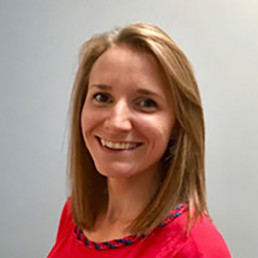
Written by Gemma Hargraves
Gemma Hargraves is a Deputy Headteacher responsible for Safeguarding, Inclusion and Wellbeing.
Reflecting on several sessions from the recent Diverse Educators virtual conference it struck me that so much of our EDI work is also vital safeguarding work. As a Deputy DSL I spend my days balancing pastoral care, safeguarding, History teaching and various other responsibilities. Until now I actually hadn’t realised how my EDI work is complementary to my safeguarding work.
All readers will have heard that “you can’t be what you can’t see” and this need for recognition and role models extends to safeguarding too. Pupils need to know they are in an environment where they are valued and celebrated in order to feel truly safe. It strikes me that a pupil may not disclose various issues if they feel they would not be heard, understood or believed. Beit a neurodiverse pupil struggling with issues around consent, an LBGTQ+ young person experiencing unkindness, a disabled child faced with ableism daily or a person of colour dealing with regular microaggressions. Of course having a diverse staff body, including in senior positions, may help ensure all pupils feel safe and a sense of belonging but active allies have a vital role to play here. Pupils in the first presentation said “ignorance breeds intolerance” and I would build on that to say in safeguarding terms ignorance is dangerous. We all need to be professionally curious whilst being respectful. @AspringHeads gave some examples of shocking things Black teachers have been asked, including endless comments about hair, skin colour or names, and comments of this nature to Black pupils would absolutely be considered a safeguarding concern.
A key part of safeguarding is also accurate and timely recording of incidents; this is key to tracking trends and understanding context to actively promote inclusion. If we are to ensure all pupils are safe and can thrive, we need to have a clear picture of incidents or challenges faced. We have a duty to ensure that pupils are not negatively labelled or stereotyped based on any characteristic and teachers have high expectations of all pupils. Safeguarding is also about preventing harm to children’s development and taking action to enable all children and young people to have the best outcomes – here EDI is clearly vital and we can see tangible returns on investment in diversifying the curriculum. Of course, we reinforce this by the displays around school, the books studied, the trips that are offered etc but the culture individual teachers nurture in their classrooms is key to both EDI and safeguarding.
As was made clear at Diverse Educators recently, good intentions are not enough. We must act. EDI requires resourcing, time and energy. It must not be an afterthought in another year of TAGs marking and administration, staffing issues and COVID challenges ad infinitum. Safeguarding is everyone’s responsibility and so is EDI. We need to recognise and respect cultures, traditions and changes but with clear red lines in terms of safeguarding to ensure everyone can bring their whole self to school and be safe. Sometimes we hear “I don’t see colour” but surely we must see it, value it, celebrate it and protect all children regardless.
Limp Handshakes and Auditory Bias: My Process of Applying for Headship
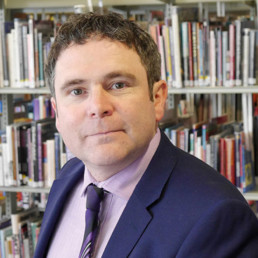
Written by Kevin Carson
Headteacher at The Royal Masonic School for Girls. A learner, an English teacher, and a dad to 2 fab girls. Originated in Liverpool, enjoying living in the Shires.
I have been attending a monthly Diversity, Equity, and Inclusion leadership programme with Diverse Educators since April 2021. It is led by @Ethical_Leader and @Angela_Browne, and it has uplifted, educated, and inspired me every month.
Hannah and Angie are clear and correct that DEI work is safeguarding work, that well embedded DEI makes school communities safer places. The aim of their programme is not to rush into anything in a knee-jerk way, but to listen, reflect, learn, and then start to put together a 3-to-5-year plan that works for each school: carefully planning sustained change over time.
At the start of this week’s session, mention was made of an excellent candidate for headship who so far has not been appointed and there was a feeling that this may at least in part be connected to his race and from that perhaps also in part to his strong accent. This anecdote stayed with me after the session, conscious as I am that over 96% of male and female headteachers in England are white, and with my own awareness of how frequently my accent was referenced when I was applying to be a Headteacher.
I have decided to share a couple of anecdotes relating to my applications for the post of Head at independent schools when my accent was considered a relevant factor.
I once applied for a Headteacher post where afterwards I was told by the head-hunters, “You were the preferred candidate, the first choice, but the Board have decided not to appoint. They were quite vague and evasive with us about why this was, and they could only give reasons such as ‘His handshake wasn’t strong enough’, whatever that means. I think you can draw your own conclusions from this, Kevin.” A few months later, the Bursar at that particular school later told me straight that the Chair of Governors didn’t wish for somebody from my background as Head of ‘his’ school.
On another occasion I attended a training session with one of the head-hunter firms, as part of a course for half a dozen applicants who they felt were close to headship. Afterwards, the course leader told me, “We agreed that you were the strongest candidate from the process we saw today. You are 100% ready to be a headteacher, but we think that you should seriously consider booking yourself in for elocution lessons because your accent will be the reason that you are not going to be appointed.” As an English teacher I know enough about language, culture, and identity to be able to reply that if a school didn’t wish to take me as I am then they weren’t the right school for me and I wouldn’t wish to be their headteacher.
For those who do not know me, as my About Me section says, I grew up in Huyton, Liverpool, a working-class area that is in the second most deprived borough in England, and I have quite a strong Liverpudlian accent. The Chair of Governors at my then current school did make a decision to directly address my accent in his reference, raising it as a potential consideration before clarifying why this shouldn’t be a factor in a Board’s thinking, pre-emptively calling this out as it were.
I am a straight, white, male headteacher of an independent school. I have a 1st class degree, and an M.Phil. from Trinity College, Cambridge – there is a whole bunch of privilege there. At the time of the anecdotes above I was also Interim Head of The Grammar School at Leeds, a large, diamond model school. I had quite a strong CV on paper, and to be honest I suspect that in a comparable way to my accent wrongly being deemed relevant at interview, it is also not inconceivable that my educational background helped get me to the interview stage. Some Boards like this kind of thing, taking it to signify far more than it should.
I want to be clear that this is not a post about bias and class in the independent sector. I have worked in four independent schools, valued them all, and have found them all to be far more egalitarian workplaces than some might imagine. Very many people working in the independent sector desire to do social good and to help to create a more inclusive and sustainable world. More specifically, in RMS, I have found a values-led school with a strong ethos that is prepared to think differently about all aspects of education. I feel appreciated there for who I am, and my accent or social background aren’t referenced in relation to the job that I do because nobody feels they are relevant.
But I have shared a few of my experiences here, (and each of these are only from six years ago), as anecdotal evidence that bias is still out there in appointing Heads. The education system would be a better place if this were not the case, and we all need to consider the ways in which we can demonstrate commitment to a diverse, equitable, and inclusive staff community in our schools. For me, it was bias in relation to attitudes to social class, and a little bit of auditory bias. The government figures from 2019 indicate the extent to which this is a far greater issue in relation to race and ethnicity.
The data shows:
- There were around 22,400 headteachers in 2019, and over two-thirds of those (around 15,100) were women
- 96.1% of female headteachers were White (92.6% White British, 1.7% White Irish and 1.8% White Other)
- 97.0% of male headteachers were White (92.9% White British, 2.1% White Irish and 2.0% White Other)
A few final thoughts on this topic for now from me:
- I hope and want to believe this bias and prejudice is receding, gradually diminishing. I believe in the transformative power of education as a force for social change that makes a positive difference. Interestingly, the Foundation that found my background not the right fit for them and that blamed it on my limp handshake have changed their entire Board since then, and there are now seven women and three people of colour on a more diverse Board there. You would like to think this would not happen again.
- @jillberry102 was a great source of advice and support throughout my applications for headship. She always said that in the end you find the right school for you, the right fit for you. I do think there is something in this. I can now view my earlier experiences as lucky escapes.
- There is a great deal I have taken from the Diversity, Equity, and Inclusion leadership course, both from the leaders and from the brilliant colleagues that are attending with me from both sectors, and from the UK and overseas. I am sure I will write about this learning again, including about how we strive to apply it at RMS. We have just appointed two DEI leads at RMS – they are brilliant colleagues who will do a great deal of good in this role. My first show of support for them was to sign them up for Hannah and Angie’s training course with Diverse Educators.
The British Army’s Diverse Resources for the New Term
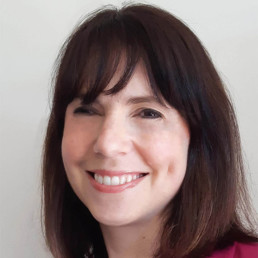
Written by Eleanor Brown
Head of Education Marketing at Capita
The British Army has developed new resources to help students aged 11-16 build their understanding of why it is important to commemorate significant groups in the history of the British Army. Focusing on diversifying the curriculum, This resource pack features Women in the Army, LGBTQ+ Voices and Black History resources with links to PSHE, History and Citizenship.
Each of the resources are available for key awareness days in the school calendar and include ready-to-use lesson plans, assembly presentations, case studies and films to help students understand the changing roles of service people in the British Army throughout history, reflect on who we remember as a society or individuals and explore what it’s like to serve in the Army today. The resources are part of the British Army’s dedication to addressing the inequalities within the organisation and raising awareness of the contributions of service people both historically and now.
Women in the Army Resources
An excellent resource for International Women’s Day on March 8th, the Women in the Army resources have curriculum links to PSHE / Health and Wellbeing, Citizenship and History. The lesson plan offers interactive tasks to help young people to recognise and challenge harmful stereotypes and prejudice both at work and in society as a whole. Showcasing the significant roles women have played from the 1800s to today, the resources explore key terms such as feminism, gender and intersectionality, encouraging students to consider the evolving roles of women in the Army in the context of wider society.
The assembly slides and the film builds on these key themes, showcasing the contributions and accomplishments of women in the Army and reflecting on the stories we remember. The assembly brings a specific focus to the history of women in wartime and features empowering women including Captain Flora Sandes, who was the only woman to fight on the front line of WWI, and Adelaide Hall, a jazz singer who entertained troops in WWII and was the first Black performer to be given a long-term contract with the BBC.
LGBTQ+ Resources
Perfect for LGBT History Month 2020 in February, The LGBTQ+ Voices lesson resources show the progress made within the Army and in wider society with activities that celebrate the contributions of historical and current LGBTQ+ Army personnel, including WWI soldier Edward Brittain and Deborah Penny, the first trans soldier in the British Army. Students can also learn how they can be supportive of all LGBTQ+ people, and other groups and communities, through the allyship video resource.
By profiling six historical LGBTQ+ figures, such as the mathematician Alan Turing and poet Wilfred Owen, the assembly resource asks students to reflect on their contributions. This is followed by a film featuring current LGBTQ+ soldiers, addressing the significance of LGBTQ+ history to them and the progress that has been made by the Army to ensure everyone feels welcome.
Black History Resources
These Black History digital resources for Key Stages 3 and 4 include an assembly and lesson plan to help students understand the stories of Black British, African and Caribbean service people who have often been unfairly excluded from the history books and help students consider some of the reasons for and effects of these omissions.
The assembly resource profiles service people from throughout history, while the interactive lesson resources offer source materials to help students build core historical skills and explore the contributions and stories of Black Britons, West and East Africans and Caribbean service people during World War One. The resources also offer examples of the impact of the war on different Black women, documenting case studies of a Trinidadian, British and an East African (from the Tanzania-Malawi border region) woman.
Questions at the end of each resource help facilitate discussions that address the significance of Black History Month and studying Black History more broadly and how this relates to modern discussions on race and diversity, including reflections from current Black soldiers to help build student’s discussions.
All the British Army resources can be downloaded for free online at: https://apply.army.mod.uk/base/lessons
The Heterosexual Matrix
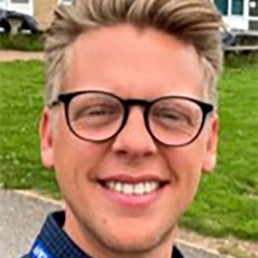
Written by Dr Adam Brett
Adam has completed a doctorate exploring the experiences of LGBT+ secondary teachers. A presentation of his findings can be found here. He also co-hosts a podcast called Pride and Progress, @PrideProgress, which amplifies the voices of LGBT+ educators, activists and allies.
“Children who need to be taught to respect traditional moral values are being taught that they have an inalienable right to be gay”
– Margaret Thatcher, October 1987.
Thanks for that, Margaret. You and your government created a culture of fear, silence and moral panic surrounding LGBT+ lives that continues to this day. Your speech continued, that “all of those children are being cheated of a sound start in life – yes, cheated!”.
She was right about one thing. Section 28 meant children were being cheated of a sound start in life.
Section 28 cemented schools as heteronormative spaces, where being heterosexual and cisgender were silently assumed, leaving LGBT+ people with the impossible decision or whether to be invisible or hyper-visible.
What a choice to have to make.
Do I hide my authentic self to fit in with the legislated normativity of schools, or do I make myself visible and put myself at professional and personal risk?
Patai (1992) refers to this form of hyper-visibility as ‘surplus visibility’, where a person is ‘extrapolated from part to whole’ and seen to represent the entirety of a minority group.
You might be thinking that a lot has changed since the repeal of Section 28 nearly 20 years ago in England. It’s true, a lot has changed and there has been significant cultural and legislative improvements for LGBT+ people. However, schools remain stubbornly heteronormative and cisnormative environments.
Think about the aspects of school that are predicated on a static, binary gender. Toilets; changing rooms; sports; gendered language; uniform; seating plans; residentials. The list goes on. What does this communicate for those who cannot or will not fit into the neat binary of male or female? That they don’t belong.
We could consider similar examples about the ways in which heteronormativity is maintained as the social order in schools. The curriculum; ethos; culture; policies; microaggressions; homophobia; the hidden curriculum; role models.
We can conceptualise all these examples as code.
I love to use the film The Matrix as a metaphor to explain the ways in which socially constructed ideas such as heteronormativity are held in place. When we are plugged into the matrix, we believe it’s real and can’t see the code that is continually constructing it. We can’t imagine alternatives as it’s all there is, in the same way that we can’t think outside of language.
However, when we develop the critical awareness of what is upholding this normativity and develop a language to name it, we become unplugged. LGBT+ people have the critical awareness to identify the ways in which schools seek to include or exclude them. Section 28 plugged us into a matrix of understanding where the silent assumption of cisgendered heterosexuality was so entrenched, that to this day, being an LGBT+ person in school can be a point of constant navigation and information management. Exhausting.
As educators and leaders, we need to listen to the lived experiences of our LGBT+ students and colleagues to create a culture, curriculum and language which can disrupt this code. We need to name things as heteronormative; we need to name things as cisnormative; we need to name things as microaggressions. We need a new language: one that allows us to think outside of the current heterosexual matrix. We need to create schools and spaces where LGBT+ people feel safe and included, without attracting surplus visibility.
Section 28 cheated a whole generation of LGBT+ young people out of a sound start in life. It’s time to unplug the matrix and make sure it doesn’t happen to the next generation.
Adam Brett
@DrAdamBrett
My Lip Sync Battle
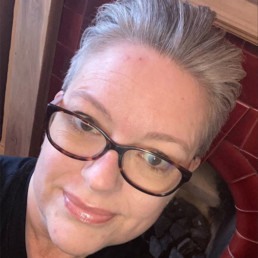
Written by Emma Ludlam
Emma has worked in Early Years for 14 years and is into her 8th year as Head of Nursery in a London Independent School. Emma has a background in the NHS and is passionate about Early Years education and development with a special interest in Disability, Diversity and Inclusion. Emma is also an EYFS Co-ordinator, dovetailing the two ends of the EYFS in her school.
I only ever knew one person with Dysphonia and Dysphagia before I was affected. My Father’s voice slowly disappeared and his swallowing was affected by Progressive Supranuclear Palsy. I always found it so distressing that he struggled to express his needs and couldn’t eat “normal” food because of the risk of choking. I never imagined I would be in a similar position in my early 40s.
In 2020, some surgery to my throat caused some nerve damage, leaving me with a paralysed vocal cord. My cord became peeled back and stuck, exposing my airway and damaging my voice.
Until you lose your voice, you have no appreciation of how much you rely on it and how much it makes you – you! As Early Years Professionals, we’re well practiced at supporting children to develop communication and language and readily support communication difficulties in the very young, those with EAL and those with a SEND that makes communication more challenging. I didn’t appreciate that I would find myself in Speech Therapy too as an adult. Voice disorders are wholly under-recognised; arguably less common than hearing or sight loss; people find it more difficult to be inclusive and more awareness is desperately needed. I am still me – just a very quiet me.
My voice is typically very weak and lacks volume. Even a simple boiling kettle can drown me out and I sound very raspy; very similar to someone with a bad dose of laryngitis. I lack expression and my tone sits a little higher than my pre-damaged voice. I have lost much of what makes me who I am. I cannot sing or laugh with any sound and the voices and accents used to read a good story, are no longer there. Dreams of reading Harry Potter to my grandchildren seem to slip further and further away. I used to love singing; (I’m not saying I was good!) whether it be in the shower, with young children or even belting out a good old Whitney Houston at karaoke – it’s something that has come very hard. I’ve upped my Lip Sync Battle game massively!
One of the more complex aspects of my condition is the accompanying dysphagia. At my worst, simply a sip of water would cause me to choke until my face was red and the tears rolled down my face. Eating is no longer an enjoyable experience; more a process of dodging aspiration and learning what you can eat and drink. Food becomes a hazard – the Squid Game of eating and drinking! Dysphagia increases risk of aspiration (food enters the trachea and lung) and can cause chest infections and pneumonia – the gift that keeps on giving! I now enjoy, safely, a partly liquidized diet and am more aware of what I can and can’t eat, but it means eating in public or outside of home is still incredibly tricky and embarrassing for me.
So how do I function? Adaption and acceptance (which is very hard to achieve) is a huge proportion of “moving on.” Waking up from anaesthesia to find yourself so changed is a real challenge. There are several aids that I couldn’t live without. My dog has been incredibly adaptive and now knows that when I grab my high decibel whistle (because I cannot call or shout) that it’s time for a walk and he has taken on board a change to hand signals well – it seems you can teach an old dog new tricks! The children I work with have been the most adaptive and that gives me real heart for the future of diversity and inclusion in all walks of life – they are our future. They have accepted my voice amplifier (a small speaker box I wear attached to a mic headset) and this helps me to be louder and is less straining for me. On most video calls, I think people assume it’s just a mic – it’s slightly less familiar when worn off screen. My other most treasured possession is my face mask from National Spasmodic Dysphonia Association which reads “Bear with me I have a voice disorder;” it allows people in shops etc an opportunity to understand my needs and help me – hearing me through a mask is impossible. I also use my iPhone to write notes for others to read.
It is essential that we take time to understand all types of communication needs. We need assistance; understand I have a lot to say and need that chance. Accepting that we cannot take speech for granted when engaging with others is a huge first step. Maintaining independence and inclusion should be our aim in all walks of life.
I challenge you to a Lip Sync Battle!
New Research: LYFTA Storyworlds Help Reduce Anxiety Around Meeting People From Different Backgrounds
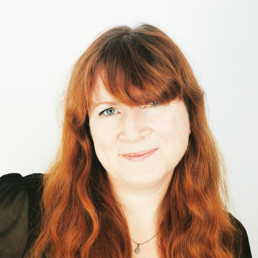
Written by Dr Harriet Marshall
Head of Educational Research at Lyfta and has been a global education advocate for over 20 years, as a teacher, researcher, consultant and education project leader.
A University of Tampere study found that virtual immersive environments that contain interactive human stories can help reduce learners’ social anxiety around meeting people from different cultural backgrounds.
A study using teaching resources from Lyfta has found that the multi-sensory and participatory nature of immersive 360° experiences led to a decrease in learners’ sense of social anxiety about meeting people from different cultural backgrounds. Engaging with new people in an immersive virtual setting gives students the opportunity to identify common interests and, as a result, develop more positive feelings towards them. Although the study was completed with undergraduate students, we are excited about the implications for engaging school-aged students with digital immersive storytelling.
The study has been published in the International Journal of Emerging Technologies in Learning. Its findings show that the reduction in social anxiety was especially significant among those who had high levels of social anxiety before the learning experience, adding to our growing understanding that immersive digital storytelling can be of particular benefit to students who get little or no opportunity to interact with those from different cultural backgrounds.
The researchers were influenced by our own school-based research (summed up in the video here), where students were shown photos of six people featured in our storyworlds, and asked how much they felt they had in common with each person, before and after exploring their stories. We found that experiencing the storyworlds led to a significant positive difference in students’ attitudes towards the people they ‘met’ there.
Our vision at Lyfta is that by the time a child leaves school, they would have had the chance to experience, and emotionally connect with, human stories from every country in the world. Lyfta stories give students the opportunity to see how interconnected and interdependent we all are. The findings of this study provide exciting evidence that Lyfta’s powerful and immersive resources have real impact in helping to nurture empathetic global citizens.
Read the University of Tampere study in full now
If you are looking to foster global citizenship and empathy in your classroom, you can Register now for free trial access to two immersive Lyfta storyworlds. https://registration.lyfta.com/

